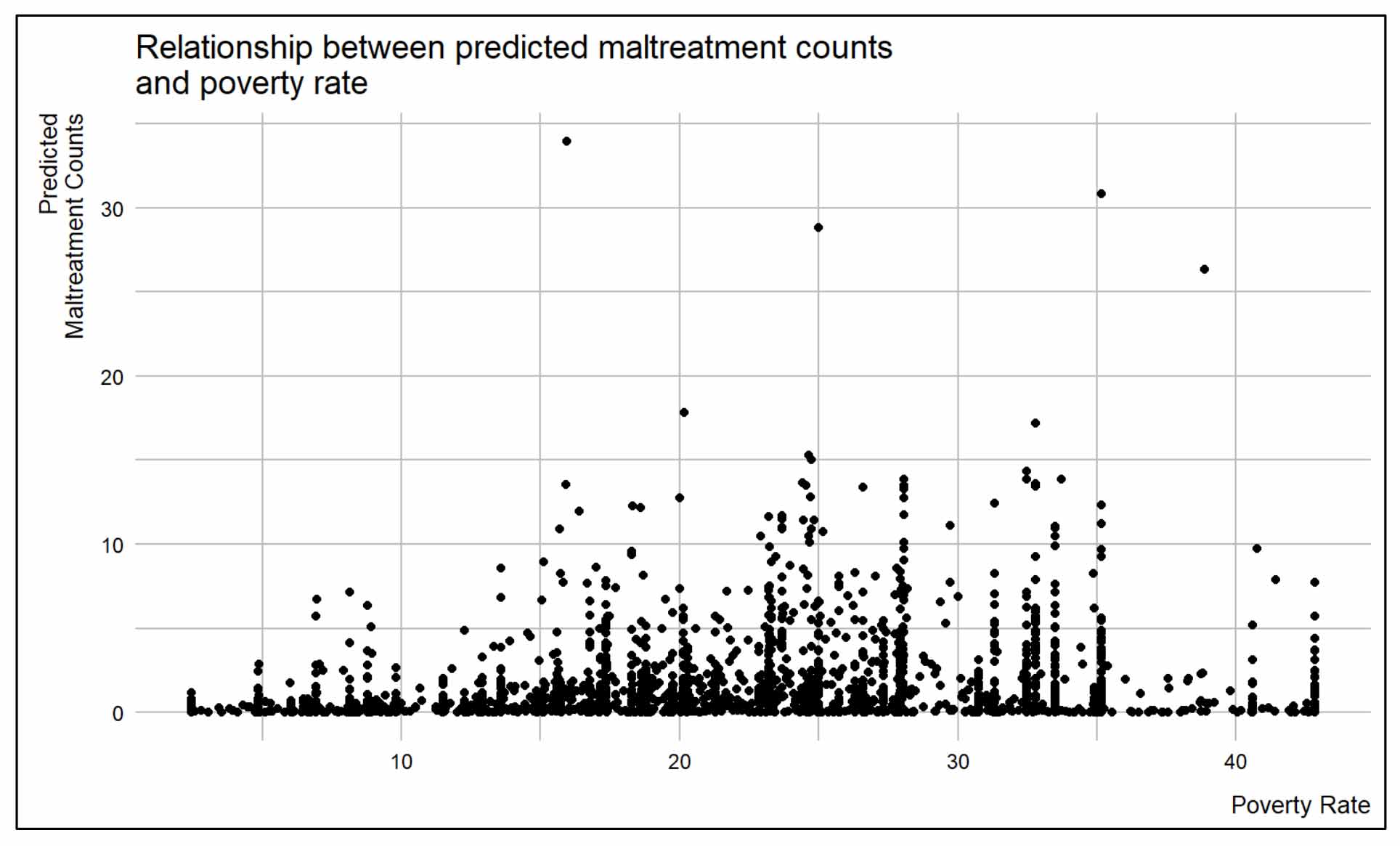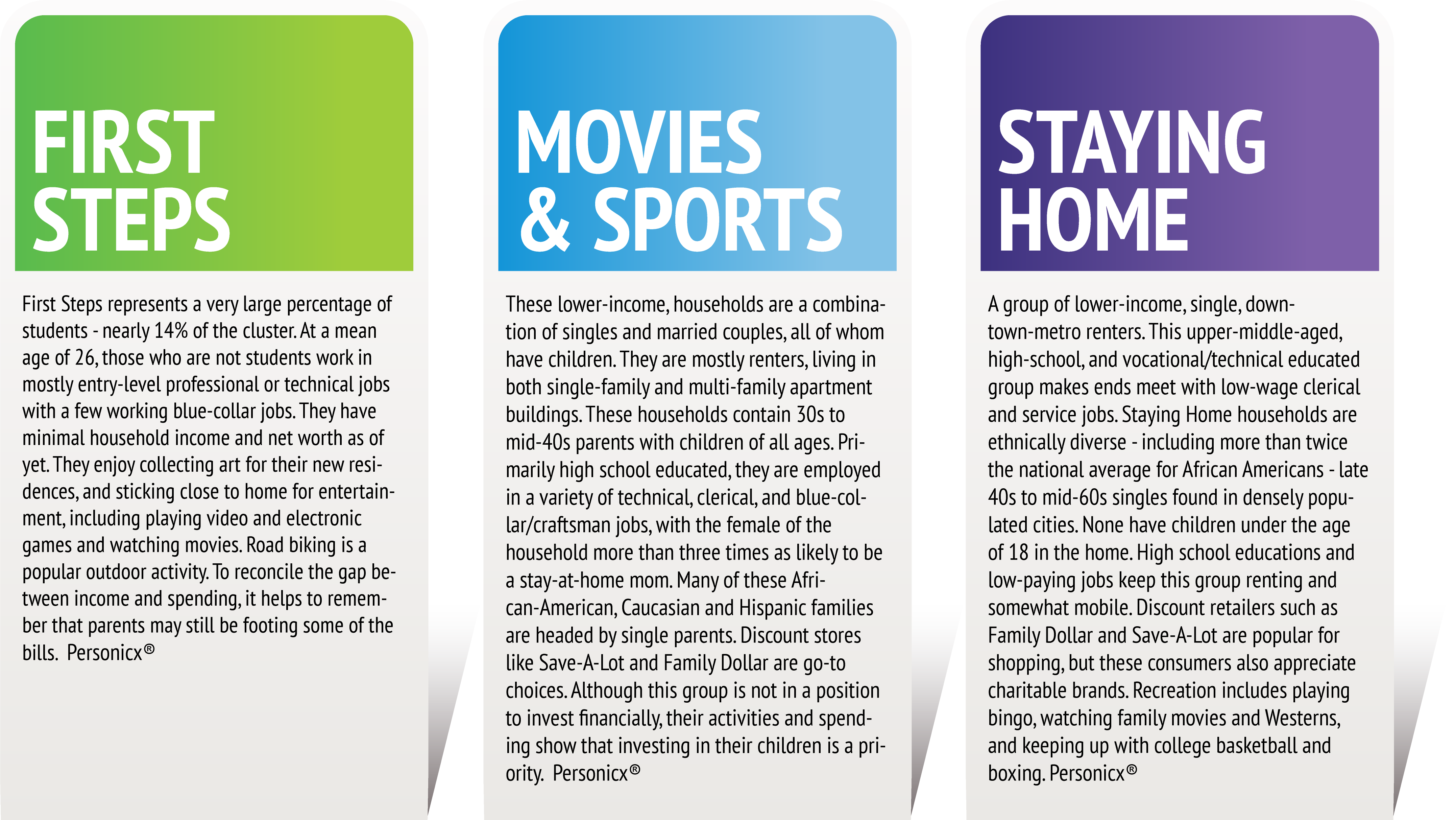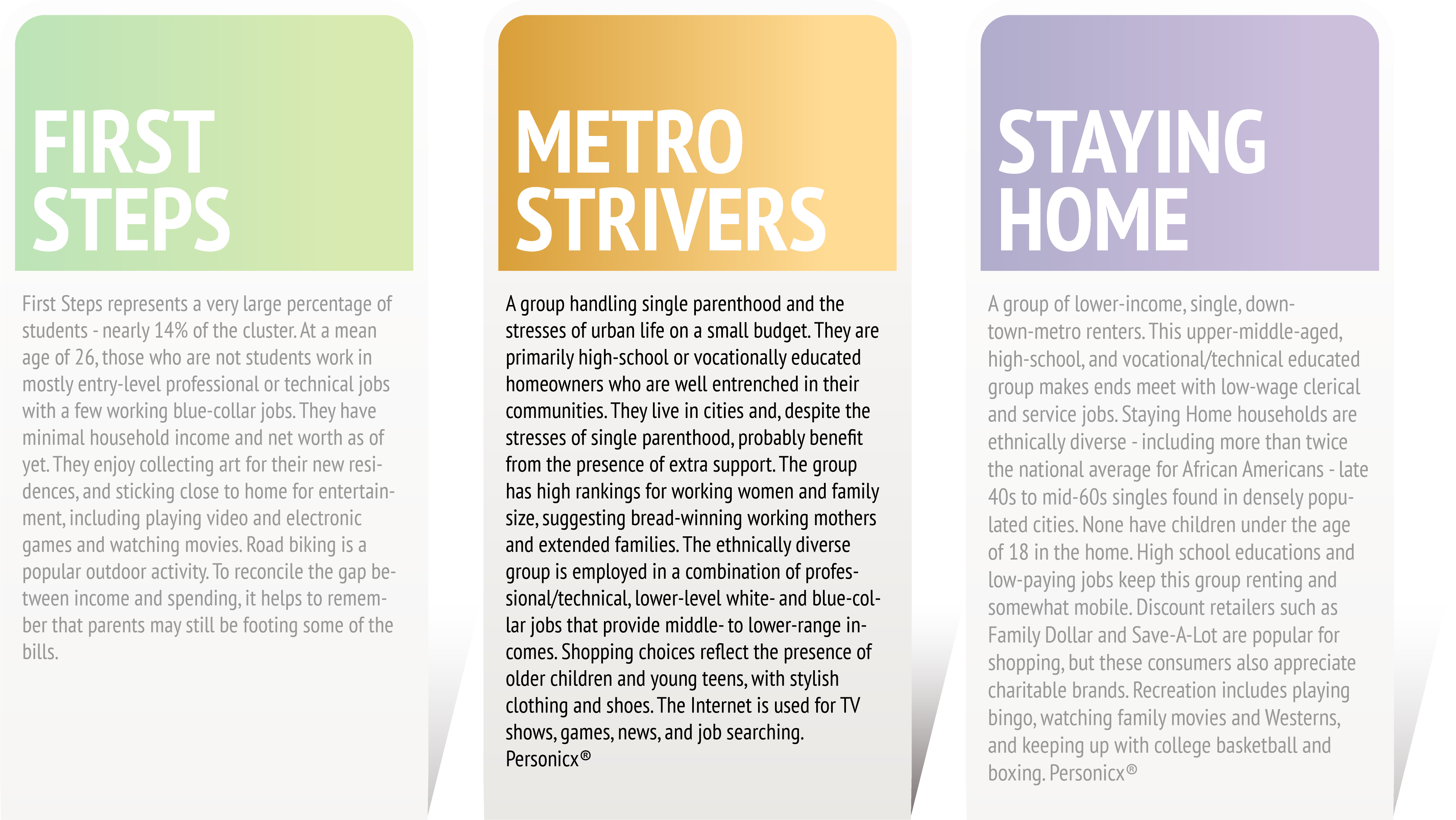At this level of granularity, the psychographic segmentation data is more reliable than census data and challenges assumptions that are commonly made with the use of census data alone
The relationship of poverty to spatial child maltreatment risk was evaluated in two ways, first via census poverty data extrapolated from the census block to the grid cell, and second, using psychographic data to define population demographics by grid cell.
Using census data, there was a weak correlation between child maltreatment risk and poverty.
The figure below illustrates the relationship between poverty rate and predicted maltreatment count. The scatter plot demonstrates
that the correlation between poverty and predictive risk is marginal.

With psychographic data, the main differentiator for the highest risk category was extreme poverty.
These findings suggest that at a unit of analysis smaller than a census block, census derived poverty data does not accurately describe the relationship of poverty to spatial child maltreatment risk.
To improve spatial targeting of scarce prevention resources and basic needs supports, further research is indicated to identify the most accurate data sources at a unit of analysis smaller than a census block.
Our analysis provides insight into family dynamics impacting child maltreatment
Risk category 5 over indexes on single mothers living in severe poverty with less than average interest in parenting. The hypothesis is that child fatality occurring in those areas are more likely to be attributable to neglectful supervision.
On the other hand, in risk category 4 where a male adult is more likely to be present in the household, the hypothesis is that more fatalities will be due to violence. If this is the case, the strategy for prevention would need to be approached differently for each location.


